
Looking for some more insights into the day-to-day activities of the Library’s Collection Care team?
Curious about the tools, materials and techniques used to care for the Library’s many and varied collections?
Part 2 of the A-Z of Collection Care series takes us from marvellous maps to pesky pests and beyond.
Delve a little deeper into the chemistry behind conservation treatments and discover the surprising usefulness of weights!
Maps:
Did you know that we hold over 110,000 maps in the Library collection?
From early maps of the world, celestial atlases, topographic maps and nautical charts to geological surveys, drainage plans and even a large machine-knitted equatorial star map, which recently featured in the Handmade Universe exhibition in the Victoria Gallery.
While the Library’s Collection Care team encounter maps of all sizes, many can be particularly large, requiring special attention when it comes to handling and storage.
Generally, maps arrive at the Library as they were stored, either rolled or folded. In quarantine, maps are carefully unrolled or unfolded, assessed for pest or mould damage, then flattened under weights. Large maps are placed in archival sleeves and transferred to plan drawers, while oversized maps are rolled onto an archival core for storage.
Some maps may require further treatment before they can be safely accessed – particularly objects that show signs of wear from repeated use and handling.
Common conservation treatments include surface cleaning and tear repairs, while a gentle humidification treatment may also be required to aid the flattening process.
Wet conservation treatments are undertaken with careful consideration as this can alter the vital scale and dimensions of a map.
The Library recently reached a significant milestone, with the digitisation of over 30,000 maps and plans!
The combined work of Collection Care and Digital Production ensure that maps of all kinds, including those that are rare and fragile, are accessible to Library visitors.
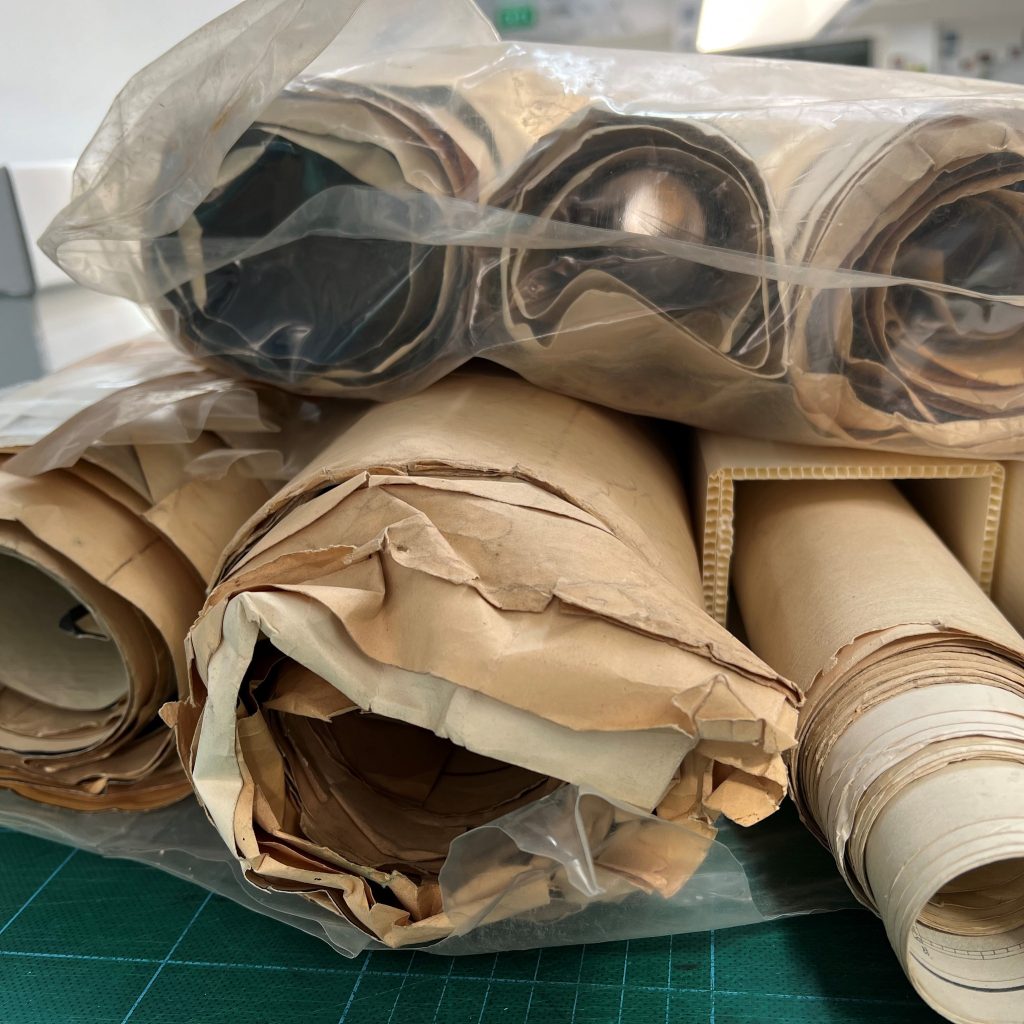

Newspapers:
Newspapers are ephemeral objects, intended to share the latest news and be discarded. They are printed on low quality, acidic paper and were never built to last.
Due to their highly acidic nature, newspapers can become yellow and embrittled over time, making them extremely fragile and easy to tear, and in some cases impossible to handle or read at all.
The Library holds over 3000 newspapers in various formats from across Victoria, wider-Australia and overseas. These date from the 1800s to present.
The Library’s Collection Care team is responsible for assessing and repairing fragile Victorian newspapers in the Library collection, in preparation for their digitisation.
This allows a digital copy to be easily accessed, while the printed copy remains safely stored.
For the Collection Care team, best practice methods for newspaper care are always changing and evolving with new developments.
Historically, many of the newspapers in the Library’s care have been stored in ways that were suitable at the time but are no longer appropriate today.
Similarly, how Collection Care treat newspapers now will also likely change over time, as advancements reveal new ways to best preserve their longevity.
The goal of the Collection Care team is to preserve the valuable contents of newspapers, holding on to precious insights into past life, while ensuring they remain accessible to all.
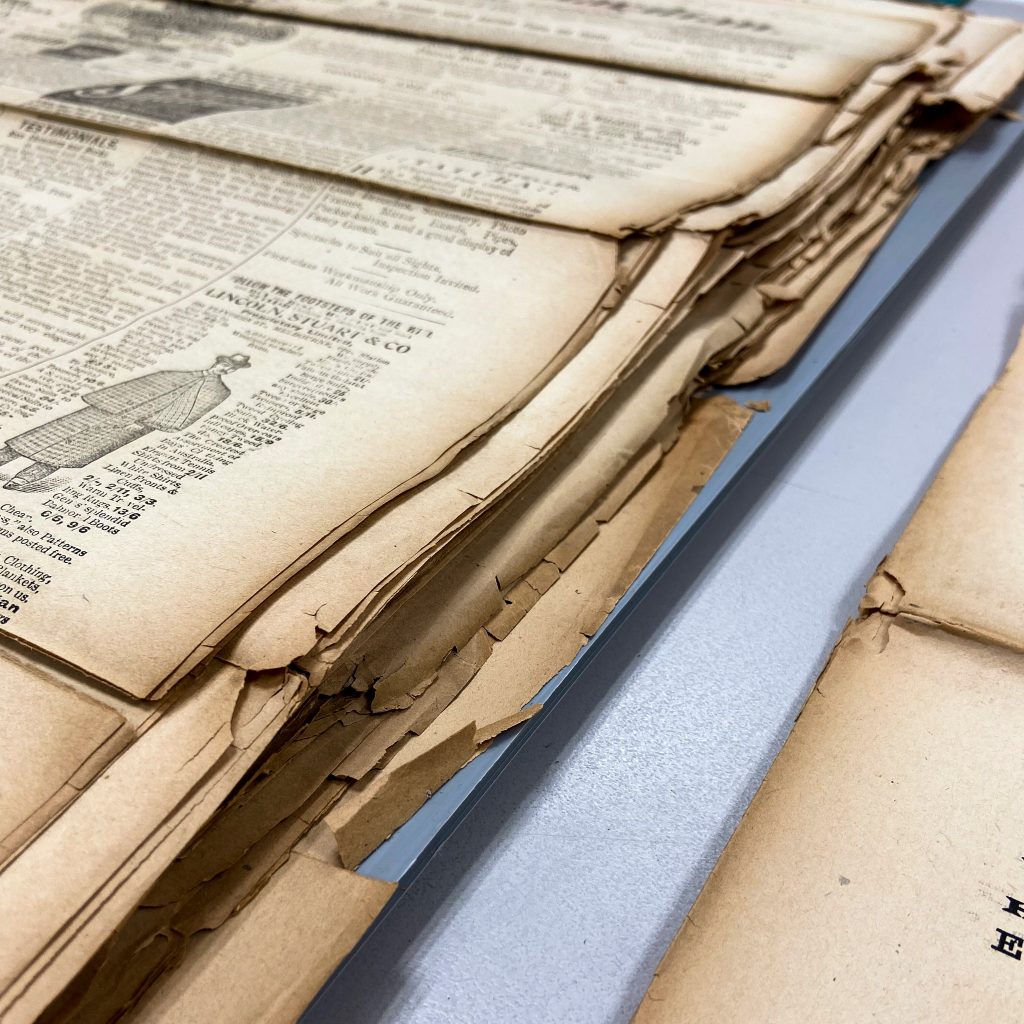

Old Repairs:
People have long found ingenious ways to extend the life of their possessions.
As examples from the Library’s collection demonstrate, well-meaning individuals have often found inventive ways to repair or reinforce a precious object that may have been torn or broken.
These include:
- A torn page stitched together
- A loss to a margin filled with recycled paper
- A theatre playbill patched with red crepe streamers
- A booklet reinforced with sticky tape, now discoloured
The repairs themselves can be of value and worth preserving – perhaps fashioned by a skilled craftsperson or previous owner.
Old repairs can be a highly significant part of an object’s story, adding value by showing a history of use or ownership, and signalling that an object was considered important enough to deserve careful mending.
The Library’s Collection Care team will assess and treat old repairs on a case-by-case basis.
The decision to reverse an old repair is always made thoughtfully and sensitively. If visually obstructive, unstable or at risk of causing further damage, old repairs may be documented and carefully removed.
Alternatively, if an old repair is made from compatible materials and not likely to cause further damage to the object, it can be stabilised (if needed) and left in place as an important marker in an object’s story.

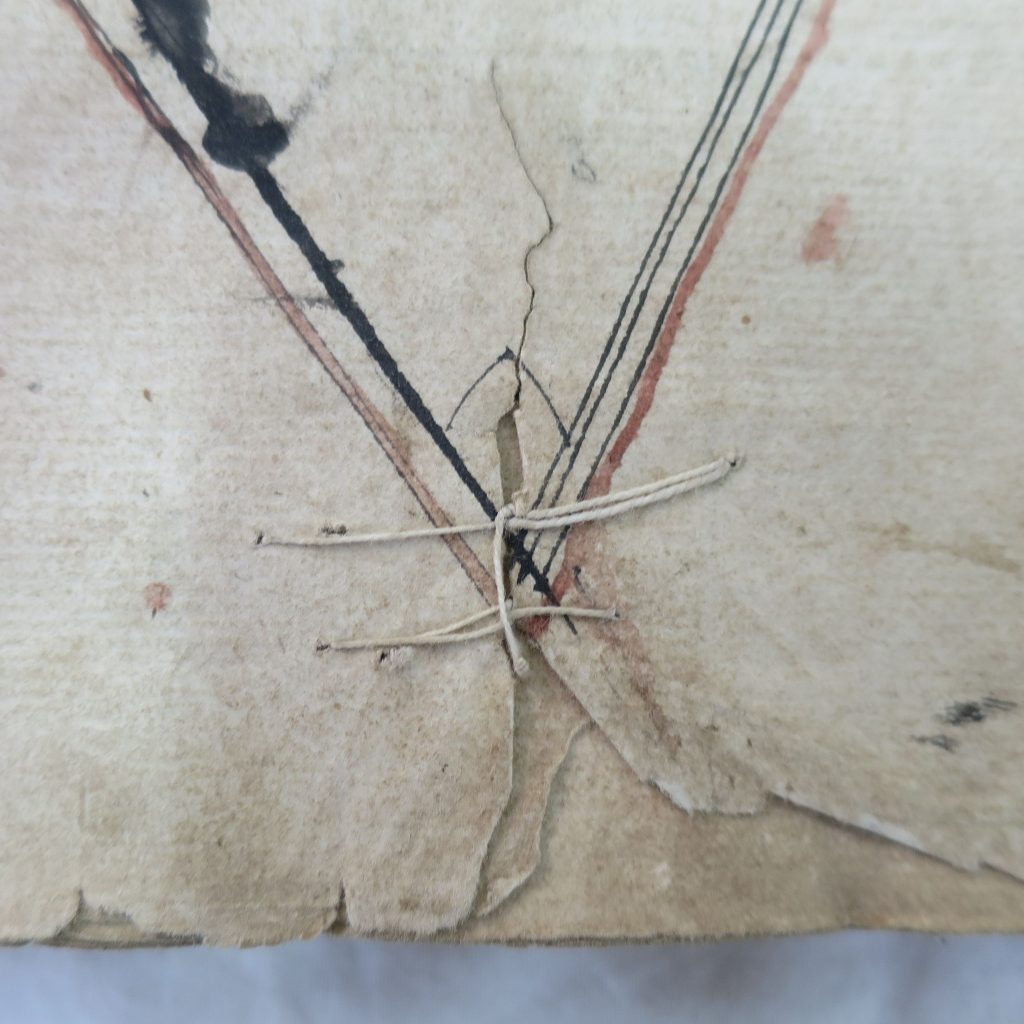
Pests:
Pests can be a major contributor to the deterioration of the Library’s heritage collections.
Rodents, moths, beetles and some insects can cause a huge amount of damage in a short period of time.
The Library’s Collection Care team oversee a comprehensive Integrated Pest Management Program that aims to reduce the risk of pest infestations and ensure that sightings or evidence of activity is swiftly reported and acted upon.
Pests can make their way into the Library through various routes, from stowing away in donated items, sneaking in through cracks in the building or simply coming through the front door.
While most of these pests are harmless, others have the potential to make a meal out of our collection.
They can feed on the proteins, starches and cellulose contained within objects, and compromise both its appearance and structural integrity.
As the weather starts to cool down, they seek warmer environments to nest and raise a family. And, if deceased, they provide a nutritious snack for something larger…
You may have noticed pest traps tucked away in Library corners. These are regularly monitored to track activity and identify species. Additionally, we maintain a quarantine program that ensures that pests who have hitched a ride on new acquisitions don’t make it any further into the Collection.
Just another way Collection Care tends to Library treasures.

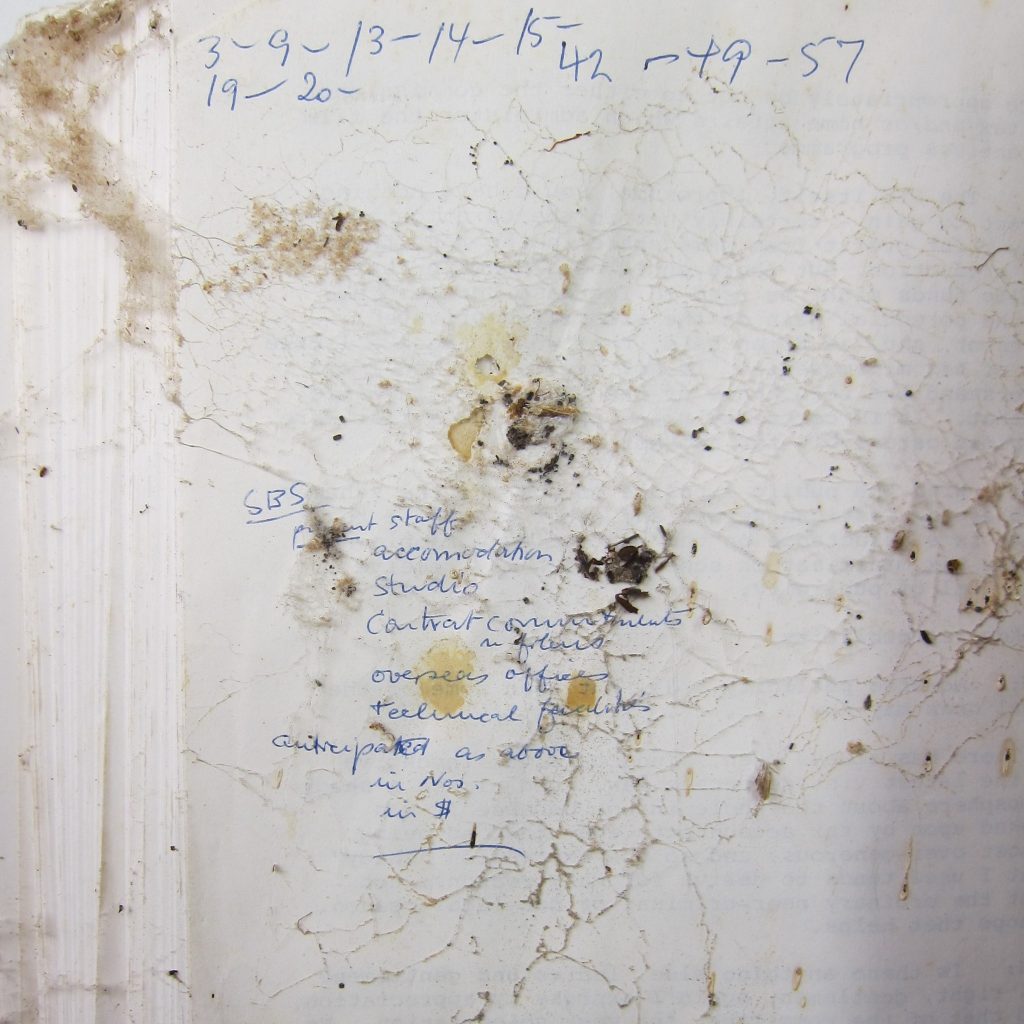
Quarantine:
While quite the buzzword for the last few years, quarantine at the Library has nothing to do with the pandemic and everything to do with protecting our varied and valuable collections.
For the Library’s Collection Care team, the main purpose of quarantine is to ensure that all acquired collection material entering the Library is free from dirt, pests and mould.
This not only ensures the longevity of recently received collections but also prevents cross-contamination with existing collection items.
The Collection Care team manages the quarantine area – inspecting items, identifying troublesome pests, and cleaning any unwanted debris, dust and dirt.
The quarantine space has been designed for chemical-free pest treatment and cleaning of contaminated collection material. Treatments may include brushing, vacuuming and rapid low-temperature freezing in a safe environment for both collections and staff.
Once items are given the all-clear, they are released from quarantine and can freely mingle with the rest of the collection.

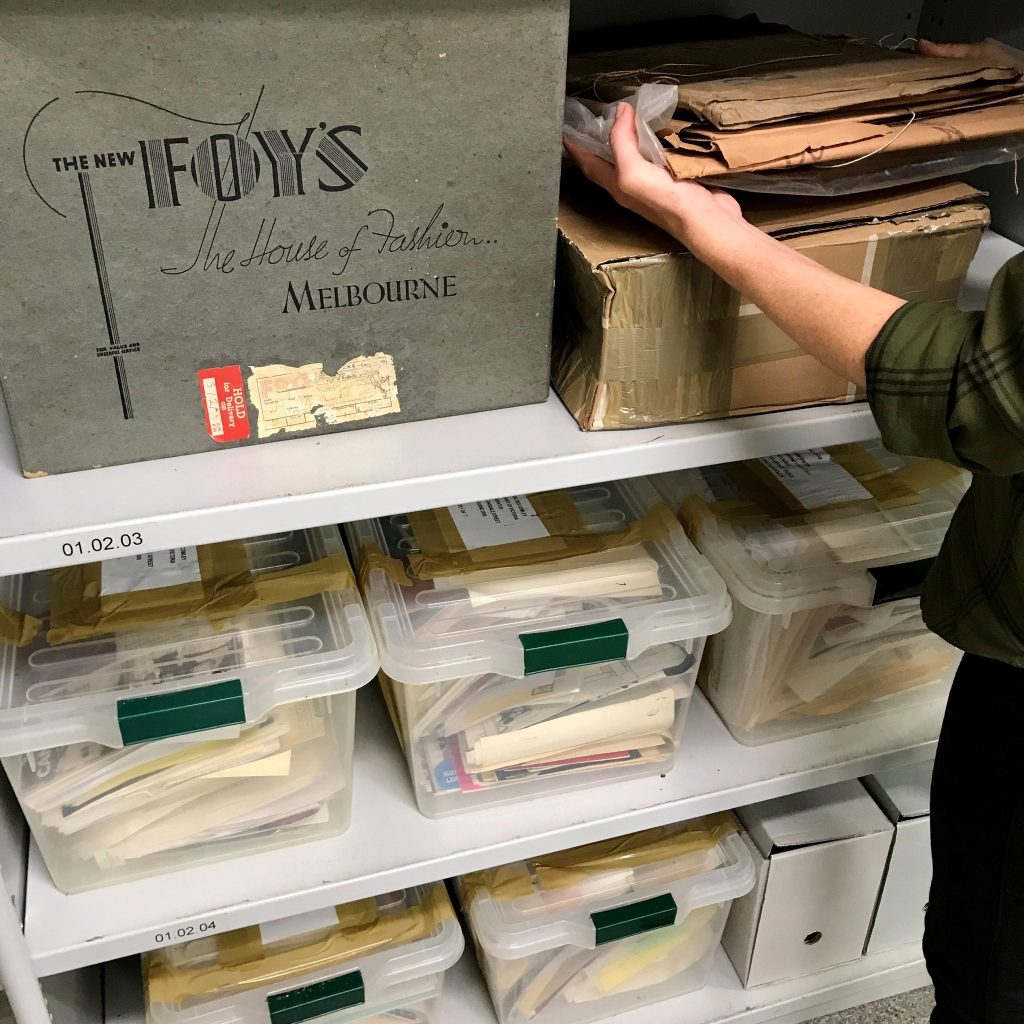
Registration:
State Library Victoria’s Registration team oversee a loan program that enables borrowers to exhibit our diverse collections in venues outside of the Library.
We lend to organisations that meet museum standards of display – be they regional or interstate museums, galleries or historical societies.
The Registration team also manage inward loans for items featured in our onsite exhibitions, international loans and those in touring exhibitions.
As part of the Collection Care team, Registration’s primary responsibility is the care of loans. They move collections that are big and small, fragile and hardy, new and old, high and low value. This process entails much planning and consultation.
The Registration team focus on the handling, packing, transport, environmental and display requirements, as well as insurance coverage and loan documentation.
This ensures works are safe and protected ‘wall-to-wall’ throughout their loan journey.
It’s all part of our commitment to broaden the forms of access to, and understanding of, the Library’s vast collection.
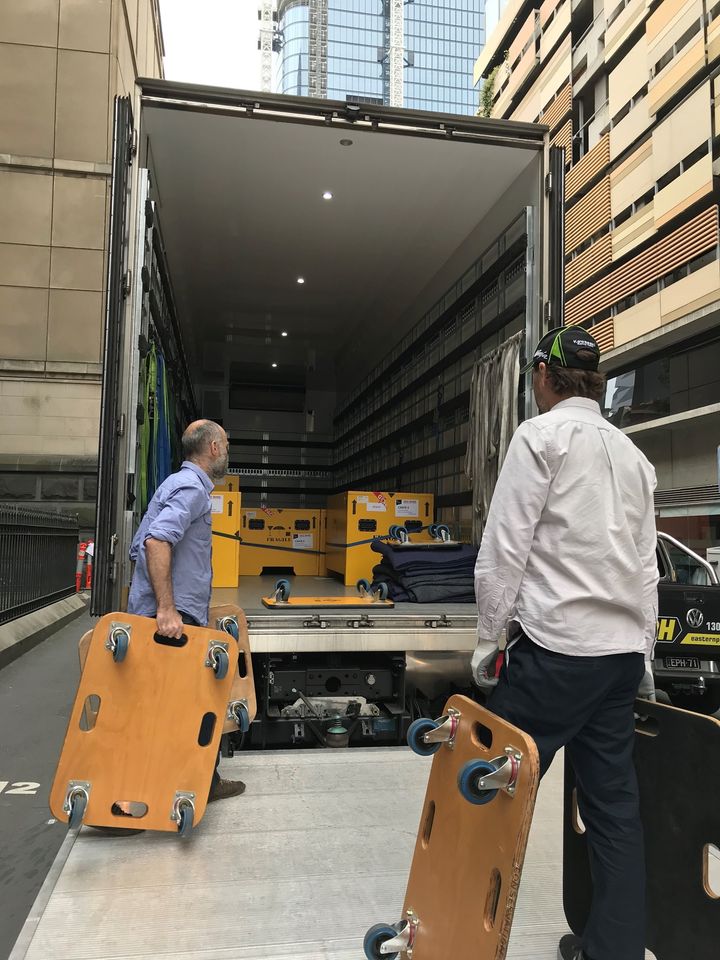
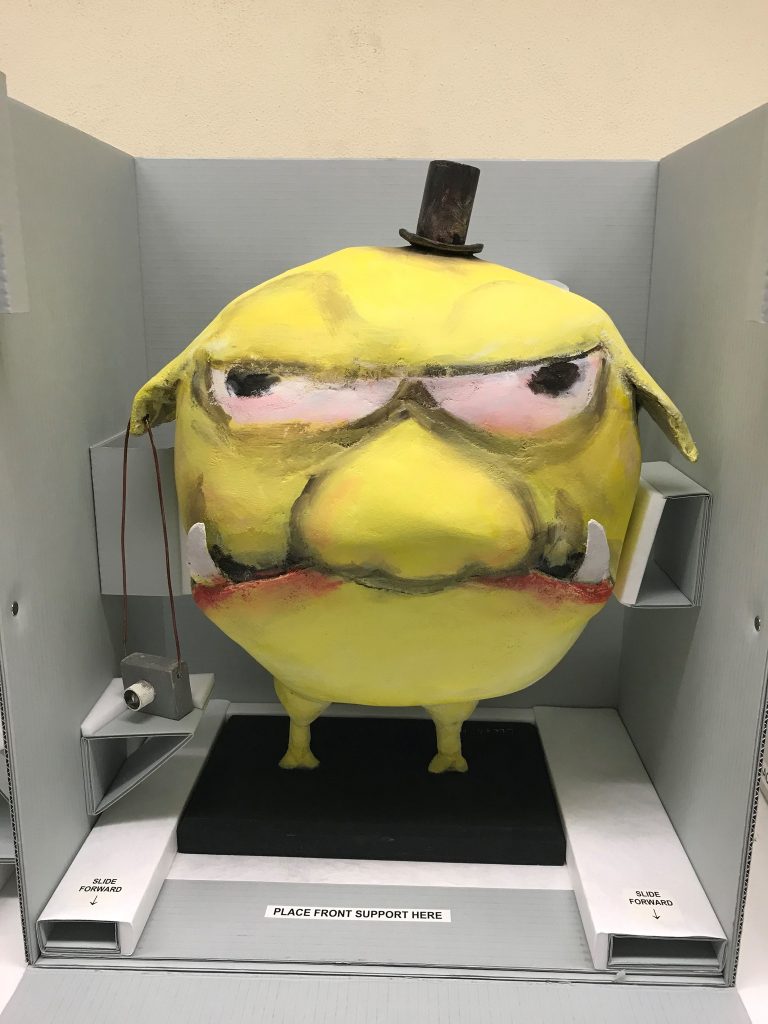
Solvents and Solubility:
Did you know that conservators in the Library’s Collection Care team have specialist chemistry training?
They draw on their knowledge of solvents (substances that dissolve) and solubility (degree to which a substance dissolves in a solvent) when making decisions about the treatment of items in the Library collection.
Conservators use solvents for a range of tasks, including the careful cleaning of surfaces by dissolving and removing dirt, grease, unwanted varnish or adhesive.
Solvents are also used to treat mould and to create solution-based dispersions, emulsions, adhesives and coatings.
As the use of a solvent involves complex chemical interactions, all components of an item are carefully tested for solubility prior to any treatment.
The item is first exposed to tiny amounts of solvent while closely observed for any changes. This is a crucial step as any undetected soluble media could result in unintended tidelines, bleeding or colour changes.
Conservators must also consider how solvents will affect human health and the environment.
Wherever possible, the least harmful solvent is chosen – what’s safest for humans (and the environment) is often safer for the object too!
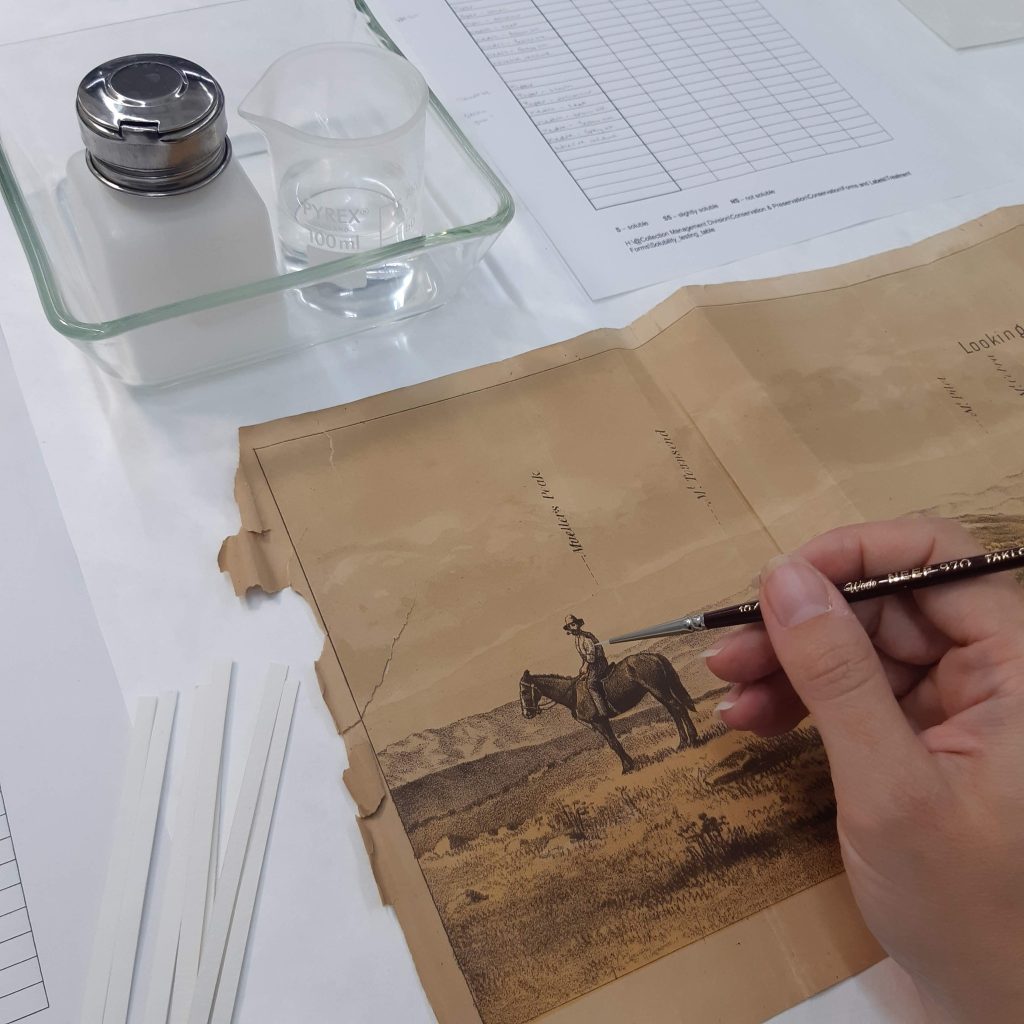
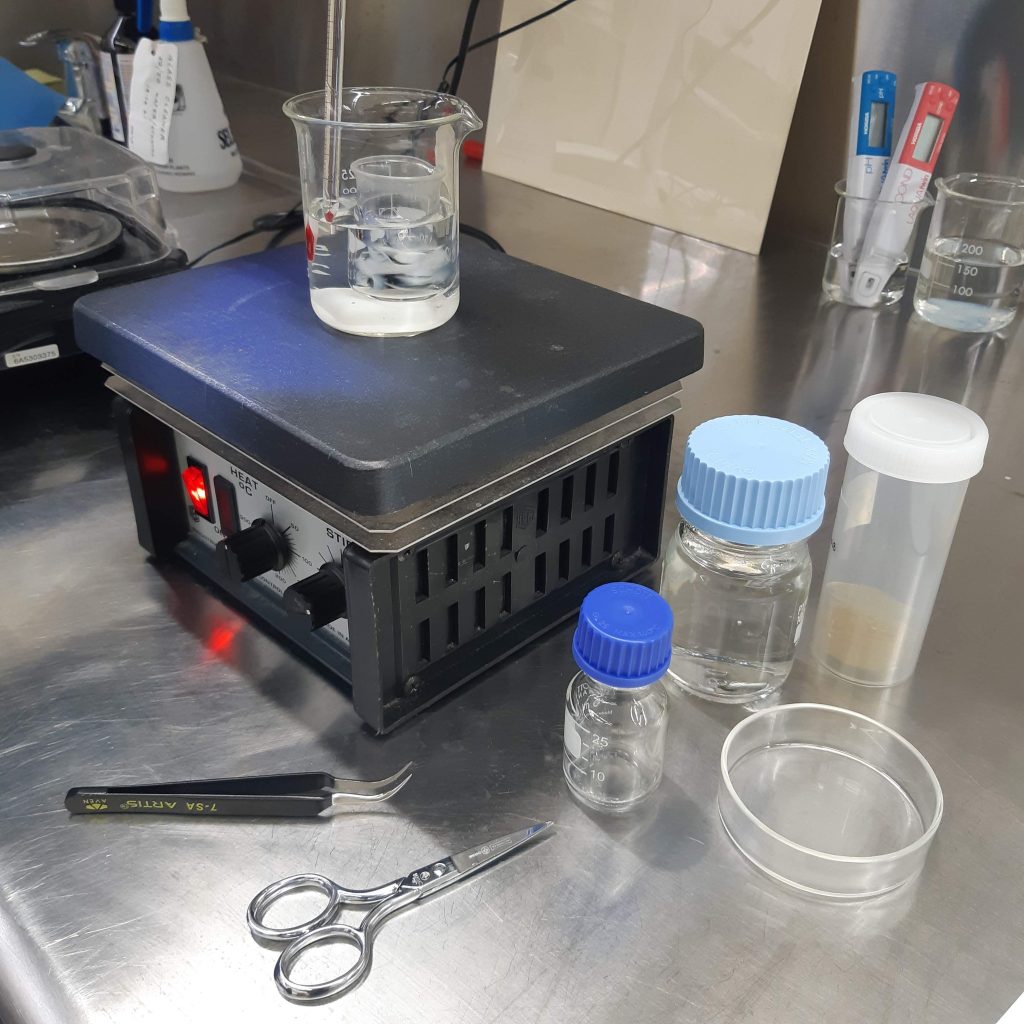
Tape:
While a beloved household staple for many, when it comes to caring for the State Library Victoria collection – tape is not all it’s cracked up to be!
There are many kinds of tape, including pressure-sensitive (sticky tape), heat-activated and solvent-activated, each of which comes with a vast array of adhesives and carriers.
Tape may be an original addition by the maker or affixed later by a well-meaning custodian as a means of repair, annotation or attachment.
While helping extend the life of some treasured possessions, tape often brings a whole new set of problems.
Different tapes deteriorate in distinct ways. Some tapes shrink, causing damage like skinning and tearing to the object; others can discolour and stain, or even result in clean patches.
The Library’s Collection Care team must identify the type of tape to determine the most effective method for removal.
First, they must consider whether the tape is an important part of the object and whether removing it would pose greater risk of damage than leaving it in place.
Techniques for removal can vary just as much as the tapes themselves! While one type of tape might pop off easily, another could take hours of patient and careful work.
Tape can present some ‘sticky’ questions, indeed!
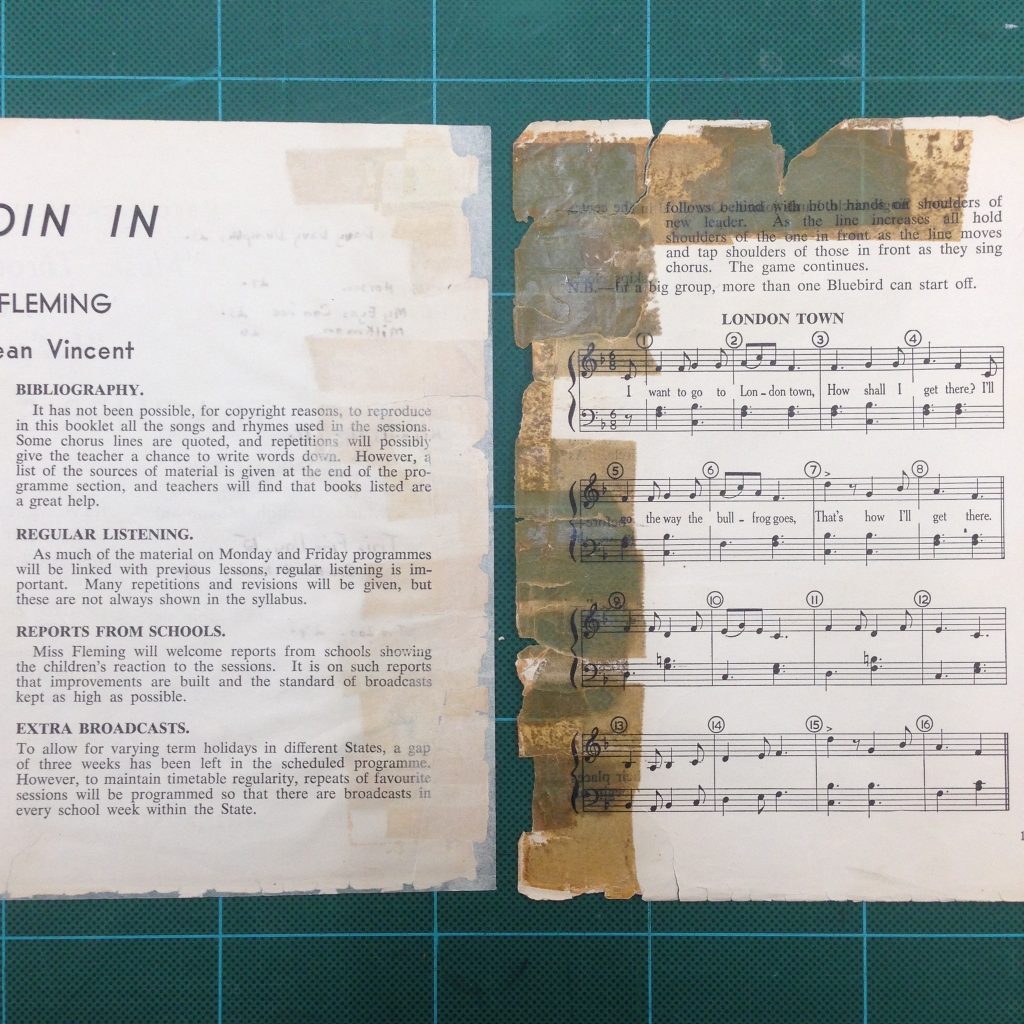
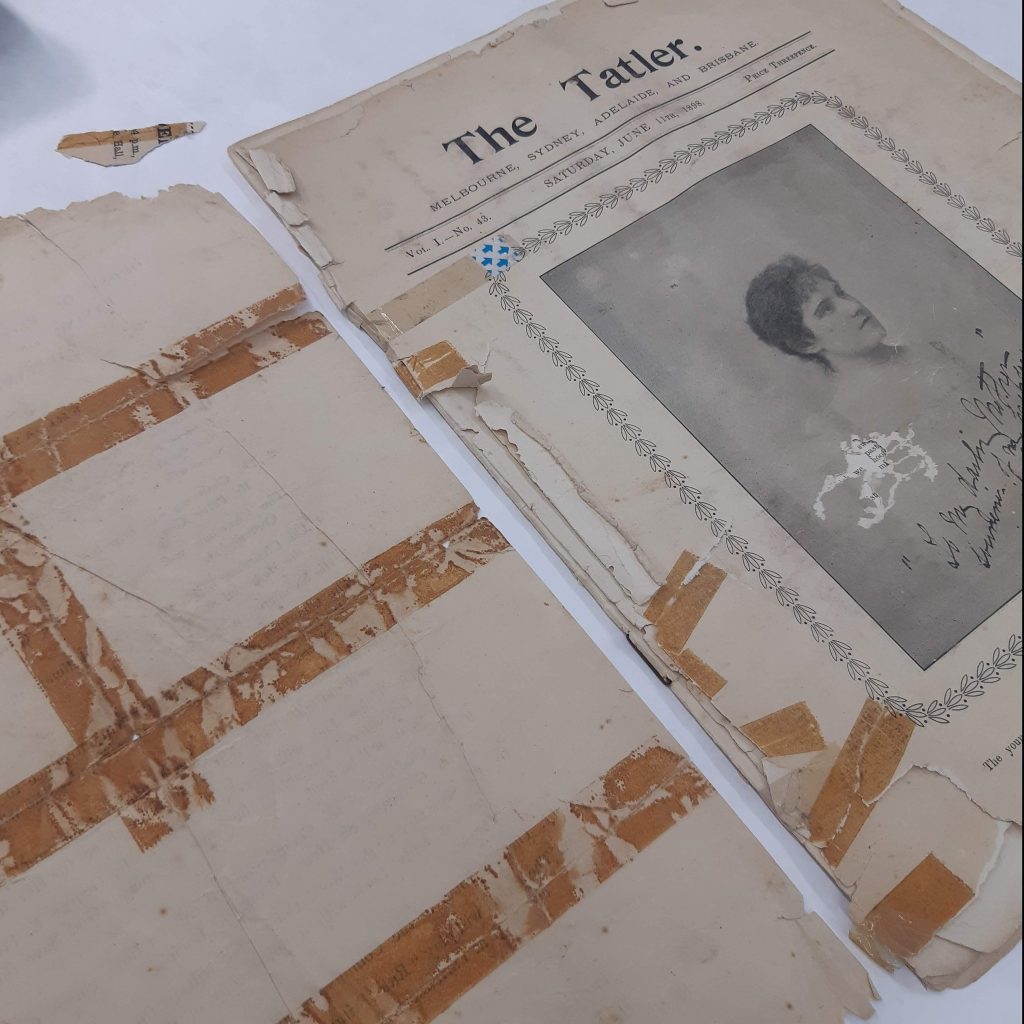
Ultraviolet light:
We know that ultraviolet light (UV) can be damaging to eyes and skin, but did you know that it can also cause irreversible damage to precious collection items?
Light is a spectrum made up of three parts. The parts include invisible UV light, visible light and infrared radiation (IR). While UV light cannot be seen, the damage it causes certainly can!
Light, especially UV light, can lead to photochemical degradation of organic material. This can include the darkening of paper and fading of colour.
For this reason, the Library’s Collection Care team work to remove or reduce sources of damaging UV light. These sources may include daylight, fluorescent lights and halogen lights. The team reduce these sources by housing collection items in boxes or behind UV filtering materials.
It may then surprise you to learn that the Collection Care team also regularly use UV light as a tool for object examination and authentication.
Exposing an object to a specialist UV light source can produce unique UV fluorescence or absorption characteristics in different materials.
This can help to:
- Identify materials such as old varnishes, adhesives, pigments and more.
- Determine the life cycle/deterioration state of damage such as mould or foxing.
- Reveal faded ink.
Pictured are some examples of UV light at work.


Vellum:
Not to be confused with paper (or imitation) vellum, true vellum is made from animal skin that has been dehaired, limed, stretched, and dried taut.
In the past, vellum played a role similar to that of paper today. It offered a smooth surface for writing or printing and a sturdy material for binding.
Indeed, vellum is a beautifully strong and stable material – as long it is kept dry and free from high humidity!
The Library’s Collection Care team encounter many fascinating vellum items in the State Library Victoria collection, from Ethiopian prayer scrolls to illuminated manuscripts in the Medieval Manuscripts collection.
Vellum also features as a binding material, as seen in the simple limp vellum bindings in the third image, which were found in great numbers in the 16th and 17th centuries.
As a covering material, vellum is very durable and resistant to wear.
Just like paper, when no longer needed, an out-of-date text on vellum leaves could be recycled – you can see this in the image of the manuscript leaf, which has been repurposed as spine lining for another book.
We’ve also some beautiful examples of vellum on display in our World of the Book 2023 exhibition.
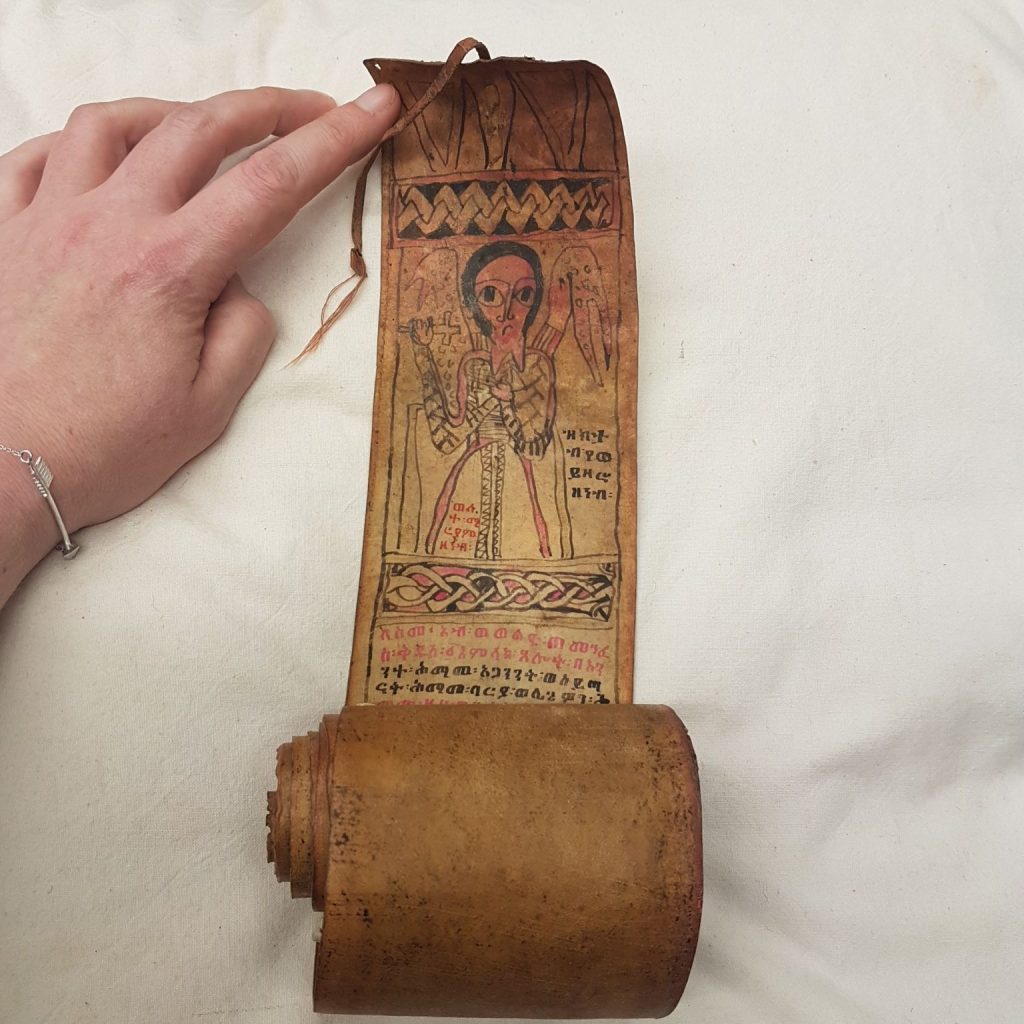
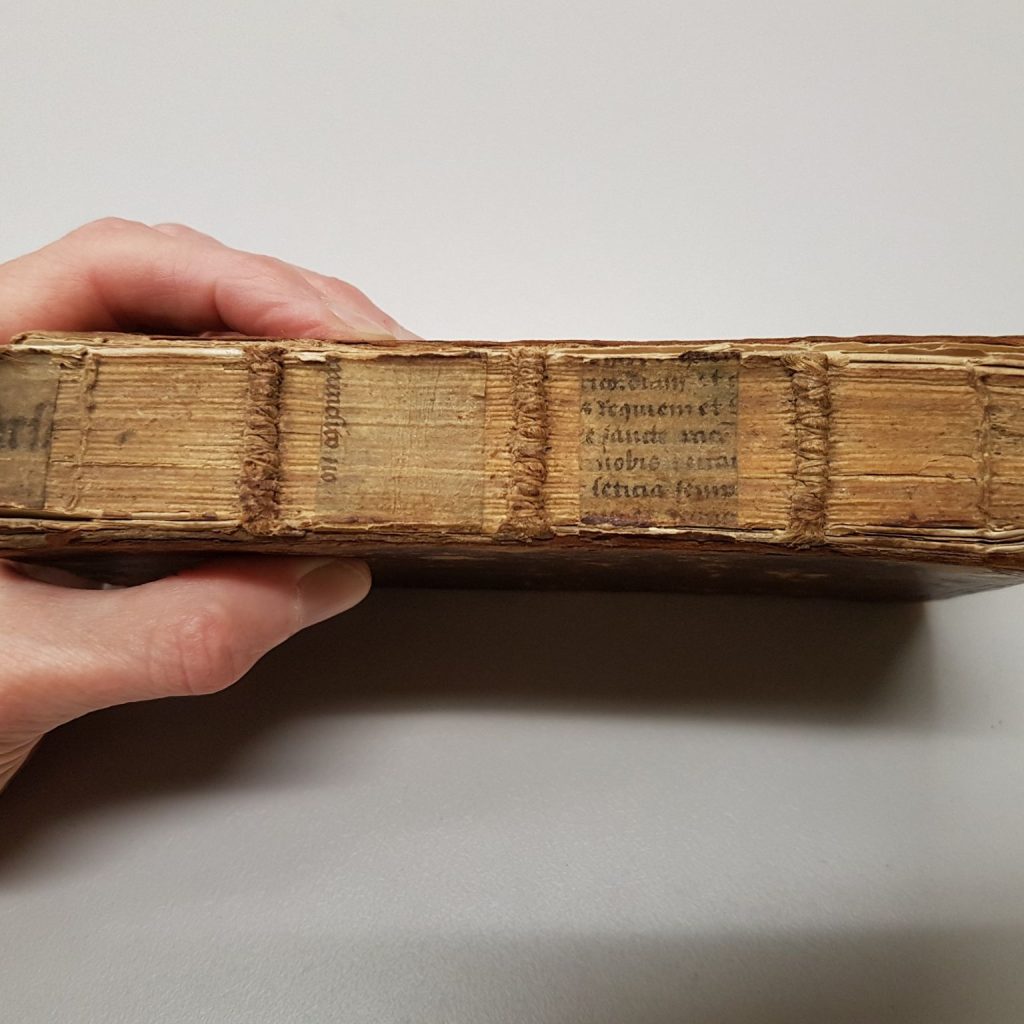
Weights:
The humble weight is one of the more unassuming tools used by State Library Victoria’s Collection Care team in their day-to-day work.
Weights are used for a wide range of tasks and treatments and come in all shapes and sizes, including:
- Snake weights
- Glass weights
- Cloth-covered metal weights
- Felt weights
- Perspex weights
- Little leather pillow weights
Weights are indispensable when it comes to:
- Flattening large, rolled items
- Pressing items during conservation treatment
- Safely handling collection material
- Gently holding books open for viewing
- Having a bit of fun in the lab
Collection Care’s weights sure do get a workout!

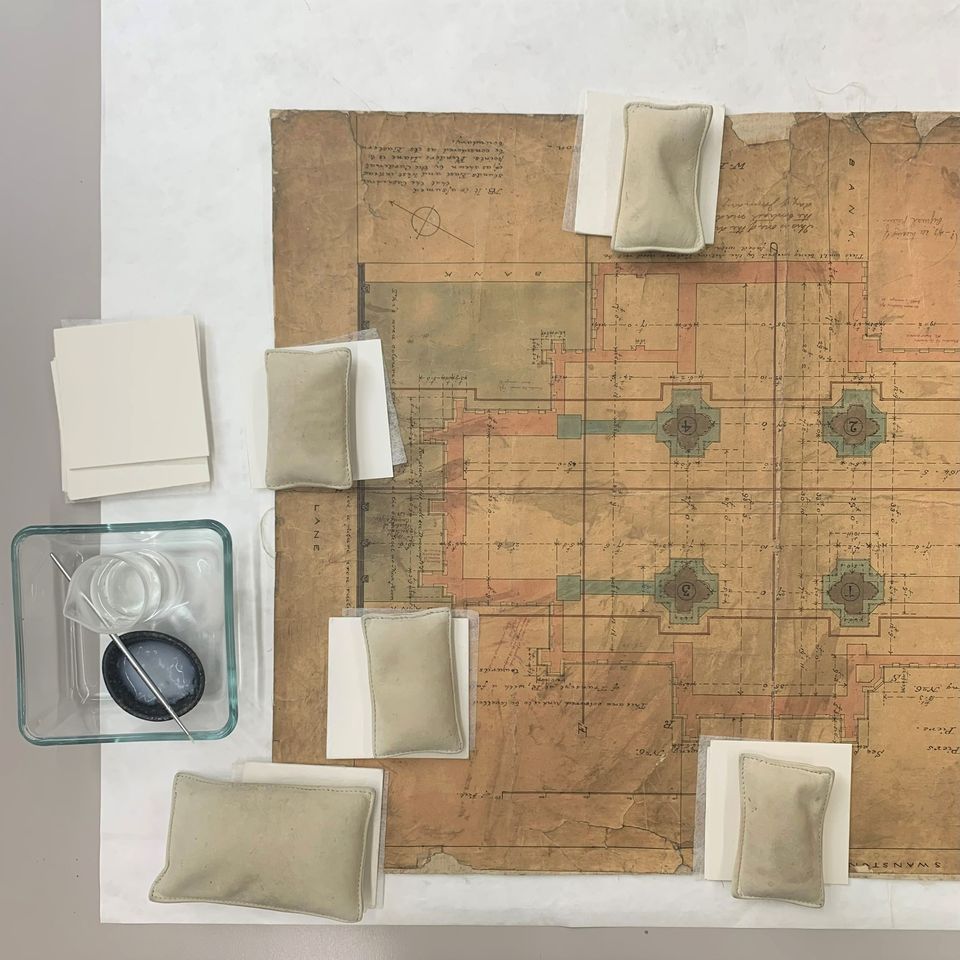
eXhibitions:
Exhibitions are just one of the many ways State Library Victoria shares its wonderful collections with our community, and the Collection Care team play an integral part in this process.
Over the last 20 years, Collection Care has worked with the Library’s team of curators and designers to place more than 15,000 collection items on display.
Conservation ensures all the long-term preservation needs of the State Collection are catered for while the items are on exhibition.
They provide expert advice on details such as:
- Display cases
- Lighting standards
- Exhibition layout
- Security arrangements
- Environmental conditions
Conservation also assesses the suitability of the items requested by curators, carrying out any necessary treatments to ensure they are fit for display and even crafting custom display supports for each item.
Exhibitions are most certainly a team effort!
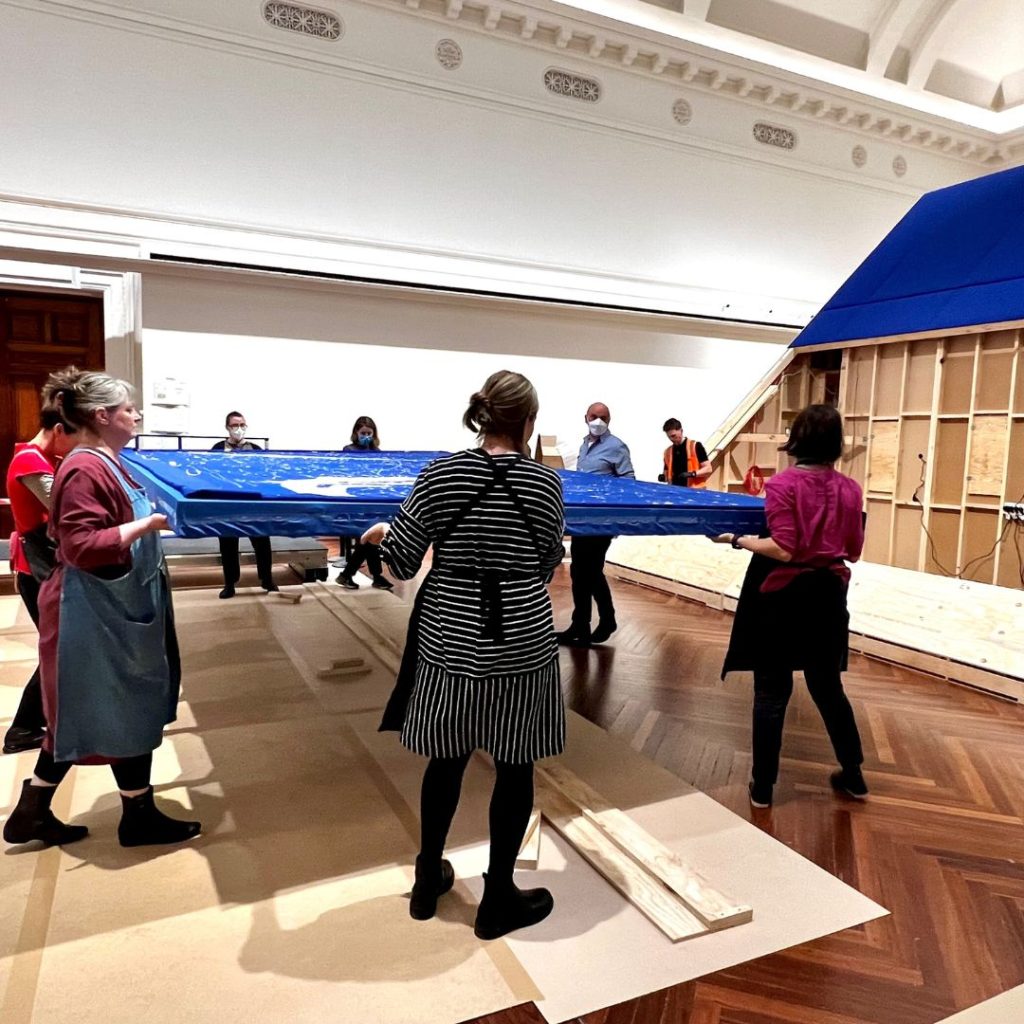
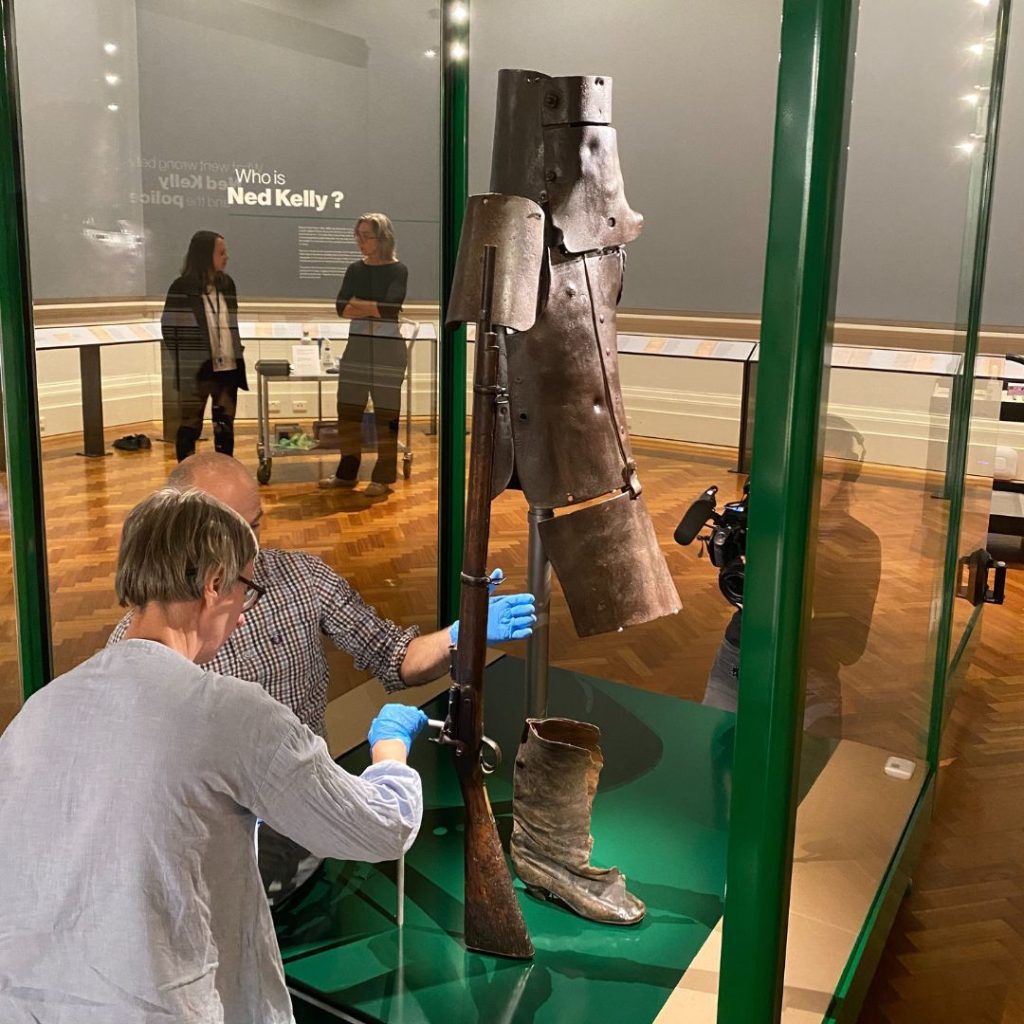
Yellowing:
‘Yellowing’ is an umbrella term used to describe several degradation processes that cause the discolouration of objects. Many items housed within the State Library Victoria collection are susceptible to ‘yellowing’ – from papers and photographic material to paintings and textiles.
Often observed as a progressive darkening from an object’s original colour to yellow and then brown, discolouration is caused by chemical changes that are either inherent to the object or occur in its surrounding environment. It often indicates that an object has become weak and embrittled.
While ‘yellowing’ is problematic for an affected object, it can be equally so for its neighbours! Newspaper clippings attached to letters and documents are a perfect example of this.
Rest assured, the Collection Care team have a few tricks up their sleeves to mitigate against these degradation processes.
Specialised packaging materials and appropriate environmental conditions not only protect objects today, but ensure they are preserved well into the future.
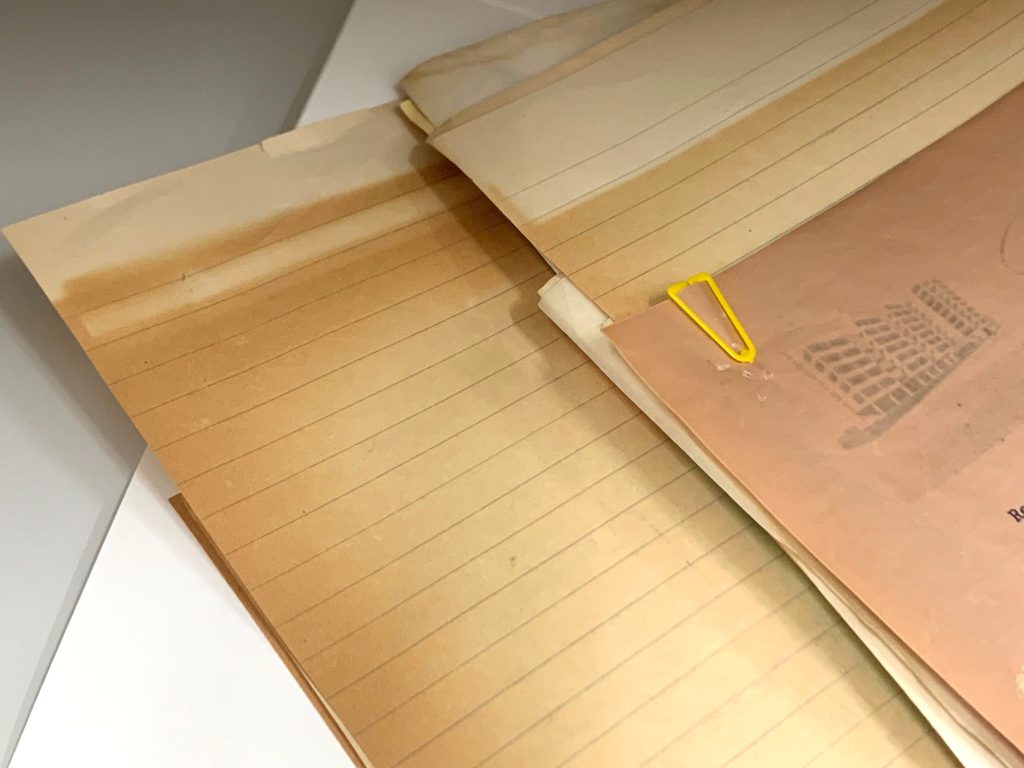
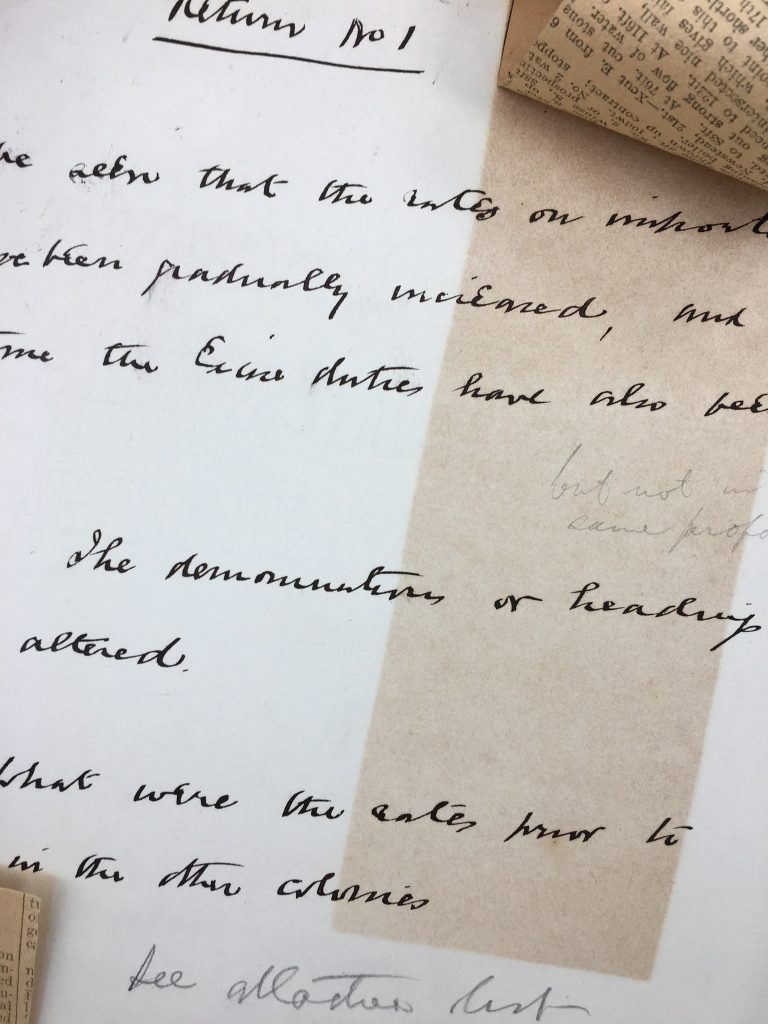
Zenith:
We’ve reached the highest point of our A-Z of Collection Care series – the end!
Originally established during Library building closure, the Preservation, Conservation and Registration teams have delighted in revealing aspects of the work Collection Care undertakes to conserve, preserve and promote the State Collection.
We’ve journeyed:
- From archival storage and gloves to the beauty of Japanese papers and tools
- From the effects of light to the stories behind old repairs
- From the sticky question of tape to the work behind exciting exhibition programs
- From hazards, pests and quarantine through to vellum and weights – phew!
Throughout the series, Collection Care have shared risks and their mitigation, challenges and solutions, and the varied responsibilities and passions of their colleagues.
We hope we’ve expressed some of the pride the Collection Care team feel for State Library Victoria’s collections, big and small.
Relevant links:
Find a conservator:
Disaster preparedness:
- AICCM
- Blue shield Australia
- Bushfires: Protecting your treasures
- Floods: Protect and salvage your treasures
State Library Victoria resources:
Discover more Collection Care blogs:
- A-Z of Collection Care: Part 1
- Preserving Marvellous Melbourne
- Blinky Bill in the Conservation Lab
- Baron Ferdinand von Mueller’s Educational Collections of Australian Plants
- Inside the Conservation of a 13th Century Bible
- Islamic Bookbinding
- Caring for our Collections
- The Chaos and Order of Marion Page
- Inside the Lab: Preparing for an Exhibition
- BTS of the Changing Face of Victoria


Ilooking for my husband he joind the airfort in1948 his name Vernon Russel Davis
Hi Fay – I would recommend contacting State Library Victoria’s ‘Ask a Librarian’ service with your enquiry: https://www.slv.vic.gov.au/interact-us/ask-librarian
Really interesting articles that answer some of the most simplistic questions. Thanks for writing and publishing
Hi Dione, very glad to hear you enjoyed it!
Is the state library interested in donations of old newspapers, or have you already got more than you can deal with?
Hi Martin – the Library does indeed have an extensive holding of newspapers! If you think you may have something of significance, please refer to this webpage for further info: https://www.slv.vic.gov.au/get-involved/offer-collection-material-library .
Hi I have a personal family diary started in Cumbria in 1849 by my 2GGM 2 years before she met my 2GGF. Over 5 generations book has deteriorated no end . How to restore it inexpensively ? Any tips so that I in turn, leave it to my daughter in due course? Cheers !
Hi Tim – how wonderful to have this significant item in your personal archive.
If you are interested in having the diary treated by a Conservator, to stabilise it for future use, I would recommend having a look at the Australian Institute for the Conservation of Cultural Material (AICCM) Directory of Conservators, which lists over 80 qualified Professional Members. These Conservators work in private practice around Australia and have been assessed to demonstrate the highest standards of professional and ethical conduct. You can search the Directory to find an expert conservator in your region.
Something you can do immediately is ensure that the diary is appropriately housed and stored to prevent any further damage. The Caring for family history documents guide on the Library website has detailed information regarding suitable materials for enclosures and appropriate environmental conditions.
Digitising the diary could be an effective strategy to reduce the need for direct handling. I would also recommend clean, dry hands when handling the item.
Hope that helps!
Could you please tell me what sort of paper I should put between my old
photos to store them so they last for many more years without fading or deteriorating? I’ve been told I need glassine paper, but different websites have conflicting information on different brands, e.g. Canson glassine paper is sometimes recorded as good, but also has it’s critics. & what do you use @ the Library?
Hello! Great question.
Glassine paper may cause deterioration in photographic images and stick irreversibly to gelatin when exposed to high humidity, so I would avoid using this for interleaving.
Archival plastic sleeves keep photos and negatives free from dust and reduce the risk of damage through handling (oils in the skin can leave permanent marks on the surface). Sleeves are available that contain pockets of varying sizes so that diverse materials can be placed together in a binder or box. Only buy plastic sleeves made from polypropylene, polyethylene or Mylar. Depending on your budget, polypropylene albums are great for housing sleeved items. These are available from specialist suppliers. Although, any box that you have handy will provide protection, just not ones that have been used to store food – these attract insects and rodents.
Ideally, all your precious items should be stored off the floor and away from external walls or windows to protect them from dramatic fluctuations in temperature and humidity. Storage areas must remain dry to prevent mould growth and water damage. Keep storage areas free of dust, dirt, insects and rodents, which can cause permanent damage.
Exposure to light can cause paper to become yellow and brittle. Light will also fade inks, colours and some photographic formats. If you decide to display original items, position them away from sunlight and other strong light sources. Avoid hanging items in kitchens or bathrooms, as moisture and cooking oils also contribute to degradation.
The Caring for photographs guide on our website also contains helpful information.
Great article, and I hope that you can present more on the arae of conservation. I am interested in the conservation of some of my own historical paper brochures. Can the library advise on conservation issues?
Hi Scott – We have a range of helpful guides on our website to support the public to care for their collections at home: https://www.slv.vic.gov.au/search-discover/conservation-guides
If you have a specific inquiry, SLV Conservators can also be contacted via the ‘Ask a Librarian’ service, and we’ll be happy to assist: https://www.slv.vic.gov.au/interact-us/ask-librarian
The Australian Institute for the Conservation of Cultural Material Inc. (AICCM) is the professional organisation for Australian conservators. This website is a great resource for information about collection care. It includes a visual glossary of different types of damage and deterioration, as well as a directory of conservators in private practice within Australia.
I would also highly recommend this caring for collections video series from the State Library of Queensland. It includes loads of useful information in a fun and visually appealing format covering appropriate handling, packaging, storage, and duplication for a range of materials: https://www.youtube.com/watch?v=musEyeOgAJk
Hope that helps!
Thanks Leah – some great tips on where to go for handling our home collections. I have access to original letters from the Western Front during WW1. They are folded and packed tightly in a canvas mail bag! I’ve known of them for years but just waiting for the right time to ‘decant without damage’. This article has given me some great ideas! Thank you!
Fabulous to hear, Amanda! So glad that the wonderful expertise and insights from the Collection Care team have proved helpful.
Thank you Leah, I will follow these up.
Such a lovely read! Thank you 🙂
Glad you enjoyed it, Bella!
As a volunteer guide at SLV, I have picked up various bits of information re conservation over the years but this summary is a wonderful supplement to my fragmented understanding. I’ll be able to weave more of these details into my narrative in the future. Thank you.
One more thing: I love the blog feature on this website. The random nature of the posts produces all sorts of unexpected delights.
Terrific, Graham 🙂
Hi Team,
What n excellent series. I did not realise that the terrible damage left by ‘sticky tape’ could be removed.
I have a few old documents with this damage and I thought this was the end.
. Is there anything I can do or is the recovery only for trained conservators?
Regards., Tony.
Hi Tony, tape removal can be a tricky business and is definitely a treatment best undertaken by a trained conservator. What I would suggest is that you place the affected items in protective archival polypropylene sleeves with archival board inserted for support. This will minimise the need for direct handling and mitigate against further damage. If you’re keen to have them treated, you can find a trained conservator in your local area through the AICCM: https://aiccm.org.au/find-a-conservator/